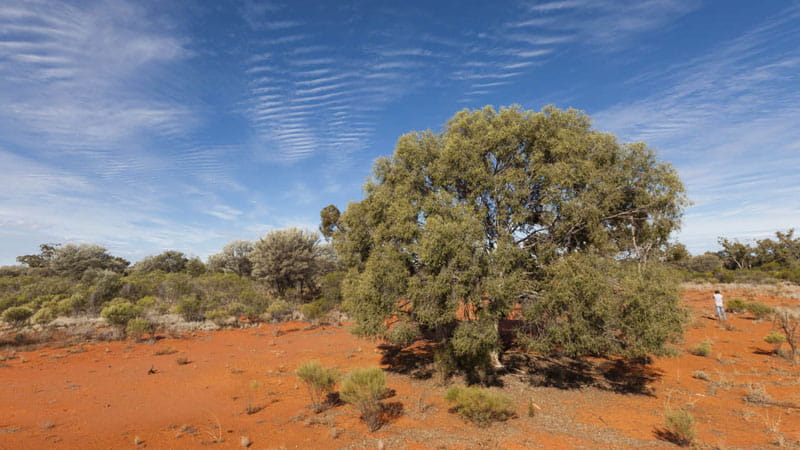Gundabooka National Park
Overview
Visit Gundabooka National Park and State Conservation Area, near Bourke in outback NSW, to see the imposing Mount Gunderbooka, go camping in the outback and see Aboriginal rock art.
Read more about Gundabooka National Park
Gundabooka National Park and State Conservation Area is a vast area rich in Aboriginal and European heritage that stretches from the banks of the Darling River, across the plains and over Mount Gunderbooka.
The park, featuring woodlands, floodplains, sandhills and the rugged Mount Gunderbooka that rises 500m above the park, is of great significance to the local Ngemba Aboriginal people. Be sure to take Yapa (Mulgowan) Aboriginal art site walking track to see some ancient Aboriginal rock art up close.
You’ll find the striking sight of weathered red soils against bright blue skies makes for excellent landscape photography, and you’re bound to see a range of bird life along the park’s walking tracks. There are great places for camping, including sites for caravans, motorhomes and tents, or you can stay in the historic Redbank Homestead.
Local alerts
For the latest updates on fires, closures and other alerts in this area, see https://www.nationalparks.nsw.gov.au/visit-a-park/parks/gundabooka-national-park/local-alerts
Map
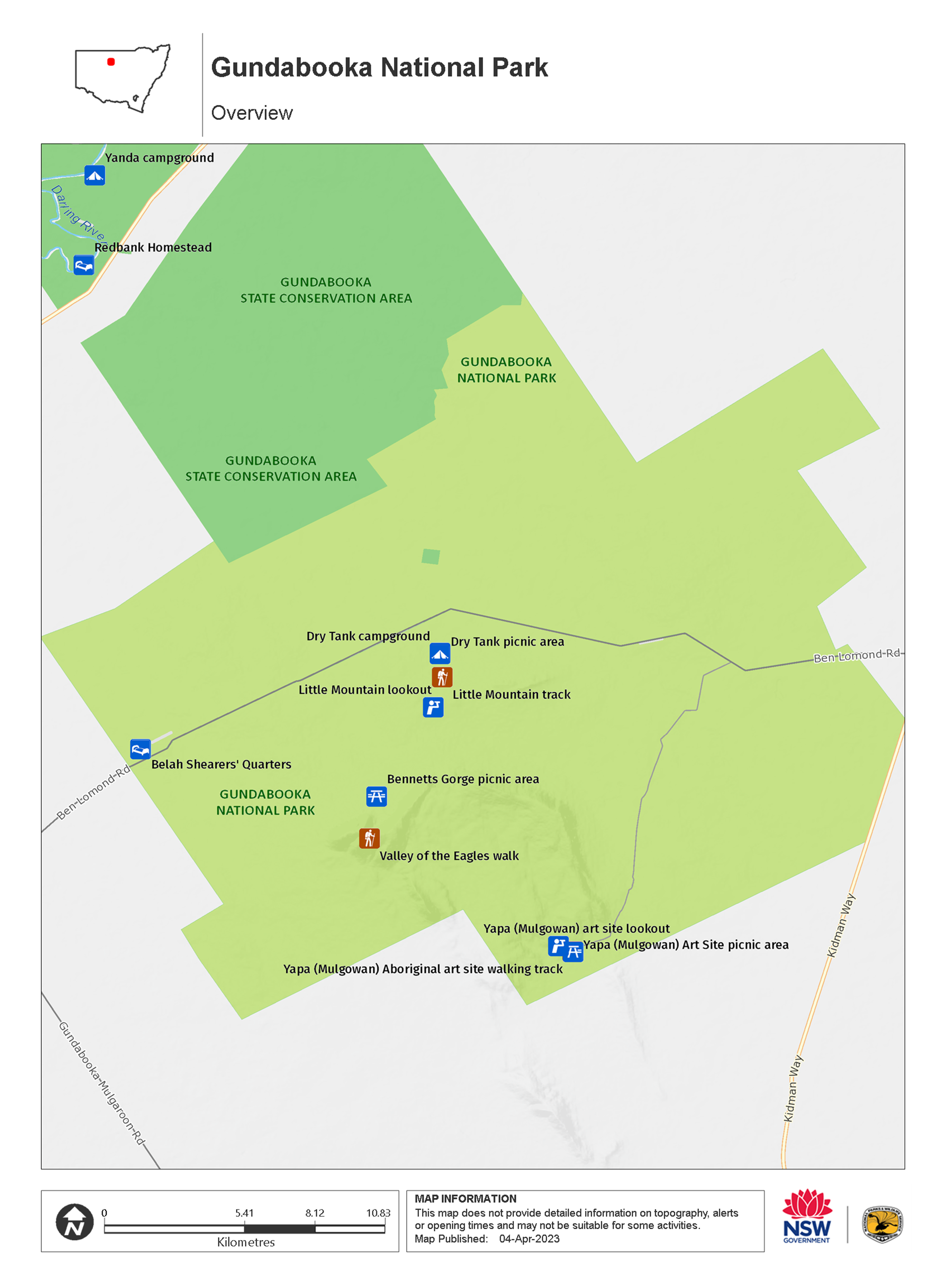
Map legend

Contact
- in the Outback NSW region
Gundabooka National Park is always open but may have to close at times due to poor weather or fire danger.
-
-
Bourke office
02 6830 0200
Contact hours: Monday to Friday, 8.30am to 4.30pm. - 51-53 Oxley Street, Bourke NSW 2840
-
Email: npws.bourke@environment.nsw.gov.au
-
Bourke office
Visitor info
All the practical information you need to know about Gundabooka National Park.
Maps and downloads
Nearby towns
Bourke (52 km)
Around 50km north of Gundabooka National Park is the town of Bourke. Considered the "Gateway to the real outback", Bourke is home to around 3,000 people and has a range of places to eat, garages and services, and plenty of things to do.
Cobar (114 km)
Cobar is a flourishing town built around the thriving mining and pastoral industries. Mining commenced here in the 1870s, and today, the town is an important source of copper, lead, silver, zinc and gold. Find out about Cobar's rich past at the Great Cobar Heritage Centre.
Nyngan (245 km)
Explorer Thomas Mitchell camped at the site of the present-day town of Nyngan in 1835; the town site was surveyed in 1882. Wander the self-guided heritage trail to see many fine examples of buildings from this era.
Learn more
Gundabooka National Park is a special place. Here are just some of the reasons why:
The beautiful outback
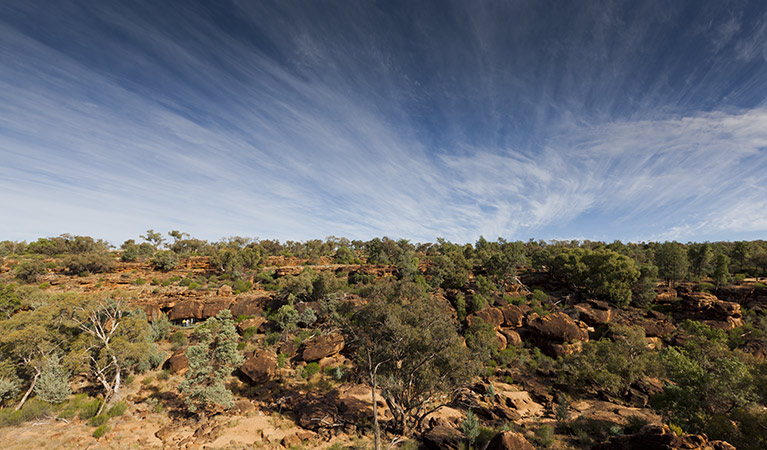
Gundabooka National Park is located in northwest NSW, approximately 50km southwest of Bourke and 110km northwest of Cobar. The 63,903ha national park extends from the Darling river banks to the Gunderbooka range. Vast stretches of grassy woodlands, open plains and rust-coloured rock dominate the landscape.
- Little Mountain walking track Ideal for outback birdwatching and walking with kids, Little Mountain walking track offers a gentle walk with scenic views of Gundabooka National Park, near Bourke.
Rewarding walks
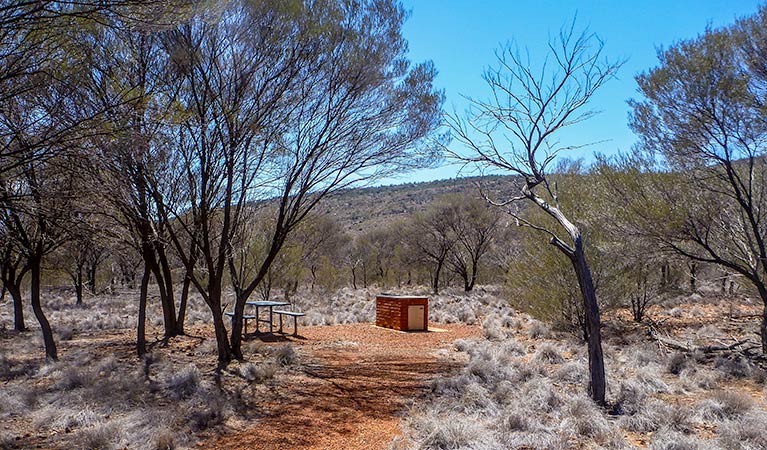
There are a number of opportunities to stretch your legs along one of the well-signed walks in Gundabooka National Park. Take the wonderful Mulareenya Creek Art Site track and see fascinating Aboriginal rock art. Walking the Little Mountain track is also well worth the effort with impressive views awaiting you at the summit.
- Bennetts Gorge picnic area Stop and relax at Bennetts Gorge picnic area when you visit Gundabooka National Park. Enjoy a barbecue or bring a picnic hamper before walking on to Mt Gunderbooka.
- Valley of the Eagles walk Valley of the Eagles walk starts at the popular Bennetts Gorge picnic area and explores the imposing Mount Gunderbooka in Gunabooka National Park.
Pastoral history
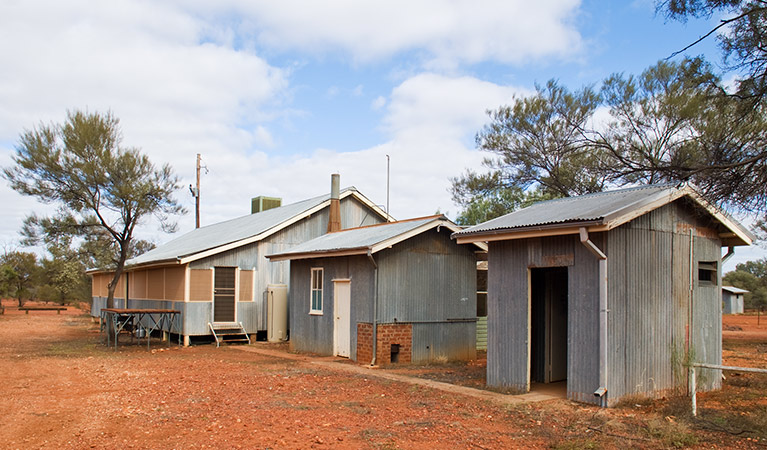
Though noted by Charles Sturt in 1829, the Gunderbooka range wasn't used by pastoralists until the late 1800s. The range was included in neighbouring sheep stations which were then subdivided after World War I. Today, three of these smaller stations - Ben Lomond, Belah and Mulgowan - make up Gundabooka National Park. Check out the old homesteads, quarters, fences, tanks, shearing sheds and yards on your visit.
An important place
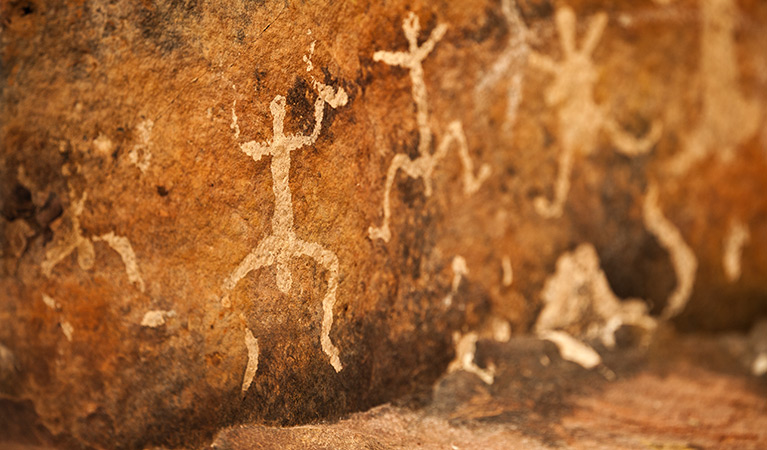
Gunderbooka range is highly significant to the Ngemba and Kurnu Baakandji people of western NSW. Before it became a national park, the area was home to the Ngemba and Kurnu Baakandji people of western NSW. Ceremonial events were held within the range. On your visit, you'll see Aboriginal rock art, with motifs including dancers and animals.
- Yapa (Mulgowan) Aboriginal art site walking track Yapa (Mulgowan) Aboriginal art site walking track offers a unique Outback experience with Aboriginal rock art and birdwatching in Gundabooka National Park, near Bourke.
An emphasis on conservation
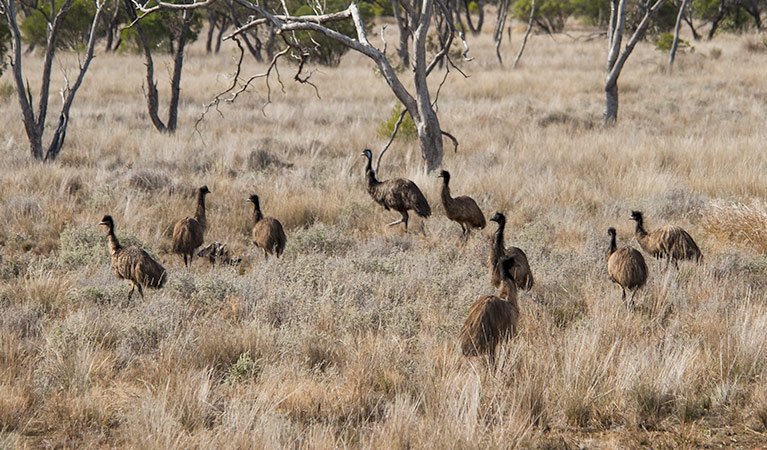
A visit to Gundabooka National Park offers the wonderful opportunity to spot some of Australia's rarest birds and animals. Several threatened species - including the little pied bat, kultarr, pink cockatoo and painted honeyeater - have been recorded in the area. The park also includes 21 different plant communities, including threatened plant species like the curly bark wattle.
- Little Mountain walking track Ideal for outback birdwatching and walking with kids, Little Mountain walking track offers a gentle walk with scenic views of Gundabooka National Park, near Bourke.
Plants and animals protected in this park
Animals
-

Emu (Dromaius novaehollandiae)
The largest of Australian birds, the emu stands up to 2m high and is the second largest bird in the world, after the ostrich. Emus live in pairs or family groups. The male emu incubates and rears the young, which will stay with the adult emus for up to 2 years.
-

Wedge-tailed eagle (Aquila audax)
With a wingspan of up to 2.5m, the wedge-tailed eagle is Australia’s largest bird of prey. These Australian animals are found in woodlands across NSW, and have the ability to soar to heights of over 2km. If you’re bird watching, look out for the distinctive diamond-shaped tail of the eagle.
-

Red kangaroo (Macropus rufus)
The red kangaroo is one of the most iconic Australian animals and the largest marsupial in the world. Large males have reddish fur and can reach a height of 2m, while females are considerably smaller and have blue-grey fur. Red kangaroos are herbivores and mainly eat grass.
Plants
-

Mulga (Acacia aneura)
Mulga are hardy Australian native plants found throughout inland Australia. With an unusually long tap root, the mulga is able to withstand long periods of drought.
Environments in this park
Education resources (1)
What we're doing
Gundabooka National Park has management strategies in place to protect and conserve the values of this park. View the detailed park and fire management documents. Here is just some of the work we’re doing to conserve these values:
Preserving biodiversity
NPWS aims to protect the biodiversity of all parks. Gundabooka National Park is no exception. Pest control programs in place in Gundabooka protect its native plants and animals.
Managing weeds, pest animals and other threats
Pests and weeds are a significant threat to the ecosystems within Gundabooka National Park. Pest management is a priority for NPWS, and Supplementary Pest Control takes place in this park. Other pest management strategies, including goat management and risk assessment for new and emerging weeds, are delivered to reduce the ongoing threat to this park's biodiversity values.
Developing visitor facilities and experiences
NPWS strives to raise awareness of Gundabooka National Park’s natural and cultural values and their need for protection. The park encourages informed, sustainable visitor access through the provision of interpretive signage and other educational means. Significant sites are acknowledged, conserved and respected, and NPWS works with the community, local tourism bodies and councils in promoting and interpreting the park and its assets.
Conserving our Aboriginal culture
Gundabooka National Park boasts a proud legacy of Aboriginal culture. Aboriginal sites within the park are numerous and significant, and ongoing NPWS projects are in place to monitor their condition. Sites and facilities within the park are also carefully conserved as required.
Managing fire
NSW is one of the most bushfire prone areas in the world as a result of our climate, weather systems, vegetation and the rugged terrain. NPWS is committed to maintaining natural and cultural heritage values and minimising the likelihood and impact of bushfires via a strategic program of fire research, fire planning, hazard reduction, highly trained rapid response firefighting crews and community alerts.

